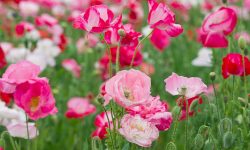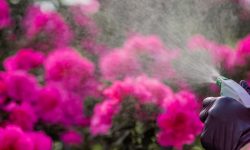Cockscomb is a flower that captures attention instantly with its bold colors and unique coral-like form. Gardeners often wonder how to grow cockscomb and enjoy its beauty for as long as possible. With its velvety blooms and striking presence, this plant adds drama and character to any garden space, whether in borders, containers, or flower beds.
Beyond its vibrant appearance, cockscomb carries a sense of charm and resilience. It thrives with minimal care yet rewards patience with months of dazzling display. Learning its growing needs allows you to unlock the full potential of this extraordinary plant. When nurtured properly, cockscomb becomes more than a flower—it becomes a statement of color, strength, and lasting joy in your garden.
Choosing the Right Variety of Cockscomb

Selecting the right variety of cockscomb is the first step toward a vibrant and successful garden display. This plant comes in many forms, each offering a distinct shape, height, and color. The most recognized type is the crested cockscomb, which features large velvety blooms that look like coral or a rooster’s comb. For those who prefer a softer look, plume cockscomb produces feathery spikes that sway gracefully in the breeze. Spicata cockscomb, with its upright flowers, provides yet another option for adding structure to garden beds.
Color choice is equally important when selecting a variety. Cockscomb flowers appear in shades of red, orange, pink, yellow, and even cream. Choosing a single bold shade can create a dramatic focal point, while mixing colors offers a more playful, cottage-style look. Consider the overall theme of your garden when deciding which colors to plant. Contrasting shades can brighten borders, while softer hues may complement surrounding greenery more subtly.
Garden size and planting location should also guide your choice. Dwarf varieties suit containers and small spaces, while taller types are perfect for borders or cutting gardens. Each variety brings unique qualities, so matching the plant to your garden design ensures harmony and long-lasting enjoyment. By carefully selecting your cockscomb, you set the foundation for a garden filled with both beauty and personality, ensuring every bloom makes an unforgettable impact.
Preparing the Soil for Cockscomb
Healthy soil is the foundation for growing cockscomb successfully. This plant thrives in soil that drains well while still holding enough moisture for steady growth. Heavy clay soil can suffocate the roots, while overly sandy soil may dry out too quickly. The ideal option is a loamy mix enriched with organic matter, which supports root development and encourages abundant blooms. Taking time to prepare the soil properly ensures the plant has everything it needs to flourish.
Before planting, it is helpful to work compost or aged manure into the garden bed. This not only improves soil structure but also supplies important nutrients. If the soil tends to be compacted, loosening it with a garden fork or tiller will create better aeration. Adding coarse sand or perlite can further improve drainage. These small adjustments make a big difference in how well cockscomb adapts and grows. Mulching with shredded bark or straw helps retain soil moisture and reduces weed competition, giving young plants a stronger start.
pH levels also matter when preparing soil for cockscomb. The plant prefers slightly acidic to neutral conditions, ideally between 6.0 and 7.0. Testing the soil with a simple kit helps identify if any amendments are necessary. Lime can raise the pH, while sulfur lowers it. For gardeners growing cockscomb in containers, using a high-quality potting mix blended with compost provides the right balance of drainage and fertility. With careful preparation, the soil becomes a welcoming environment that promotes strong roots and colorful flowers. Once this groundwork is in place, your cockscomb is ready to thrive and bring its long-lasting beauty to the garden.
Planting Cockscomb Seeds
Planting cockscomb seeds is one of the most rewarding ways to grow this colorful flower. Seeds are small but germinate quickly when given the right conditions. For the best results, start seeds indoors about six to eight weeks before the last frost. This gives young plants a head start, ensuring they are strong enough to thrive when moved outdoors. Use a seed tray filled with light, well-draining soil, and press the seeds gently on the surface. Since they need light to sprout, avoid covering them deeply.
Consistent moisture is essential during the germination phase. Mist the soil lightly to keep it evenly moist but never soggy. Covering the seed tray with a clear plastic lid or film can help retain humidity, speeding up the process. Place the tray in a warm location with plenty of indirect sunlight. Seeds usually germinate within one to two weeks under these conditions. Once seedlings emerge, remove the cover and provide them with bright light to encourage sturdy growth. Thin out weaker seedlings to prevent overcrowding and ensure stronger plants.
After the danger of frost has passed, seedlings can be transplanted outdoors. Harden them off by gradually exposing them to outdoor conditions for a week before planting. Choose a sunny site with fertile, prepared soil for transplanting. Space the seedlings about 10 to 12 inches apart to allow air circulation and room for growth. Water them well after planting to help roots establish quickly. With proper care at this stage, the seedlings develop into strong, healthy plants that will produce long-lasting vibrant blooms. Starting from seed is simple and rewarding, making it an excellent choice for gardeners of all levels.
Watering and Moisture Needs
Importance of Proper Watering
Water is a key factor in ensuring cockscomb thrives and produces long-lasting blooms. These plants need consistent moisture, especially during the active growing season. Without adequate water, the leaves may wilt, and flowers can become small or short-lived. Overwatering, however, can be just as harmful, leading to root rot and fungal problems. The goal is to keep the soil evenly moist without creating soggy conditions. Using mulch around the base helps retain moisture and prevents the soil from drying too quickly. This balance supports strong root development and allows the plant to focus energy on vibrant blooms.
Weather plays a major role in how often you should water. During hot, dry periods, cockscomb may need daily watering, especially if grown in containers. In cooler or more humid conditions, less frequent watering is required. It is always best to check the soil by touch; if the top inch feels dry, it is time to water. Deep watering is more effective than frequent light watering because it encourages roots to grow deeper. A well-established root system makes the plant more resilient to temporary droughts and helps maintain consistent flowering.
Adjusting Moisture for Containers and Beds
Cockscomb grown in containers has different moisture needs compared to those planted in garden beds. Containers dry out faster, so they often require more frequent watering. Using pots with drainage holes is essential to prevent waterlogging. Adding materials like perlite or coarse sand to potting soil improves drainage and reduces the risk of soggy conditions. A layer of mulch on top also helps regulate soil temperature and moisture levels. Gardeners should monitor container plants closely, especially during summer heat, as they can wilt quickly if neglected.
In garden beds, soil quality largely determines how water is managed. Loamy soil holds water well while still draining efficiently, making it ideal for cockscomb. Clay-heavy soils may need amendment with compost or sand to improve drainage. Sandy soils, on the other hand, require organic matter to retain enough moisture for healthy growth. Irrigation systems or soaker hoses are excellent for maintaining consistent moisture in larger beds. Adjusting watering practices to suit the planting environment ensures that cockscomb plants stay vigorous and colorful throughout the season.
Sunlight Requirements for Healthy Growth
Cockscomb is a sun-loving plant that flourishes when it receives plenty of direct light. At least six to eight hours of full sun each day is ideal for producing the brightest and most abundant blooms. Without adequate sunlight, plants may become leggy, with fewer flowers and weaker stems. Partial shade can be tolerated, but deep shade often leads to disappointing results. For gardeners who want bold, long-lasting color, choosing a sunny location is essential.
The intensity of sunlight varies depending on climate, and this influences how cockscomb should be placed. In cooler regions, full sun throughout the day provides warmth and energy for strong growth. In hotter climates, the afternoon sun can sometimes be harsh, causing stress or leaf scorching. Providing light shade during peak afternoon heat can protect the plant without reducing flower production. This careful balance ensures plants stay healthy while still delivering their signature vibrant colors.
Garden design also plays a role in ensuring proper light exposure. Cockscomb grows well in open beds, borders, and containers placed in bright spots. When grown near taller plants or structures, it is important to position them so they are not overshadowed. Rotating container plants every few weeks can also help ensure even light distribution. By planning carefully and observing how sunlight falls across your garden, you create the perfect environment for cockscomb to thrive. With the right light, the flowers will remain bold, colorful, and long-lasting throughout the season.
Fertilizing Cockscomb for Strong Blooms
Fertilizing plays an essential role in ensuring cockscomb develops healthy foliage and abundant flowers. These plants are relatively undemanding, but regular feeding helps extend the blooming season. A balanced fertilizer with equal amounts of nitrogen, phosphorus, and potassium provides the foundation for strong growth. Nitrogen supports leafy development, phosphorus encourages flowering, and potassium strengthens overall plant health. Without these nutrients, cockscomb may appear weak, with smaller blooms that fade quickly.
The timing of fertilizer application is just as important as the type used. An initial feeding at planting time gives seedlings a strong start, helping them establish roots quickly. Once the plants begin active growth, feeding every four to six weeks keeps them vigorous and colorful. Liquid fertilizers are fast-acting and provide an immediate boost, while slow-release options offer steady nutrition over time. Whichever method you choose, consistency is key to maintaining long-lasting, vibrant flowers.
It is also important to avoid overfertilizing, as too much nitrogen can result in lush foliage at the expense of blooms. Organic options, such as compost or fish emulsion, offer a gentler alternative that nourishes plants without overwhelming them. Mulching with composted materials not only improves soil structure but also releases nutrients gradually. By tailoring your fertilizer routine to the needs of your garden, you provide cockscomb with the energy required to produce bold, eye-catching flowers that continue to impress all season long. Proper feeding is the secret behind transforming healthy plants into breathtaking garden displays.
Pruning and Deadheading Cockscomb
Benefits of Deadheading
Deadheading is one of the simplest yet most effective ways to extend the blooming season of cockscomb. By removing spent flowers, you redirect the plant’s energy away from seed production and back into creating fresh blooms. This process encourages a steady flush of new flowers, keeping the plant vibrant for months. It also helps maintain a neat and tidy appearance in the garden, preventing the buildup of faded, unsightly blooms that can detract from the plant’s overall charm.
To deadhead effectively, use clean, sharp scissors or garden shears. Snip off the old flower stalks just above a healthy set of leaves. This not only promotes new growth but also reduces the risk of pests and diseases that thrive on decaying plant matter. Deadheading regularly throughout the growing season ensures that cockscomb remains colorful, lively, and full of fresh flowers that continue to brighten the garden. Gardeners growing cockscomb for cut flowers also benefit from deadheading, since fresh blooms are produced faster when old stalks are removed. Even in containers, consistent deadheading improves both plant health and ornamental value, allowing you to enjoy cockscomb in peak condition for a longer time.
Seasonal Pruning for Healthy Growth
Pruning cockscomb goes beyond flower removal and plays an important role in maintaining plant health. As the season progresses, some leaves may become damaged or yellow due to weather stress or natural aging. Removing these leaves allows more airflow around the plant, reducing the risk of fungal problems. Improved circulation also helps prevent pests that hide in dense foliage, making the plant stronger and more resilient.
Seasonal pruning is best done in stages rather than all at once. Trim back weak or overcrowded stems to give the plant a balanced shape and more space to thrive. In container-grown plants, pruning helps control size and prevents overcrowding. Light pruning in mid to late summer can refresh the plant, encouraging another round of vibrant blooms. Some gardeners even cut back one-third of the plant to stimulate new growth, especially if flowering slows down. Pruning also makes it easier to manage watering and fertilizing, since a well-shaped plant distributes nutrients more effectively. By combining both deadheading and seasonal pruning, you create the best conditions for cockscomb to remain healthy, attractive, and productive throughout the entire growing season.
Temperature and Climate Requirements
Ideal Temperature Range
Cockscomb thrives in warm conditions and performs best when daytime temperatures range between 20–30°C (68–86°F). These levels of warmth encourage steady growth, vibrant foliage, and the development of its signature crested or plume-like flowers. When temperatures fall below 15°C (59°F), growth slows noticeably, and plants may struggle to produce blooms. Prolonged exposure to cold can lead to stunted development, leaf discoloration, or even plant death. Because of this, gardeners in cooler regions often treat cockscomb as an annual, planting only after all danger of frost has passed.
Consistent warmth throughout the growing season is essential, especially during the early stages when seedlings are most sensitive. Sudden cold snaps or fluctuating temperatures can stress plants, making them vulnerable to diseases and reduced flowering. Gardeners can extend the growing season by starting seeds indoors and transplanting once conditions stabilize outdoors. In regions with unpredictable spring weather, protective coverings such as cloches or row covers provide extra insulation. By paying attention to temperature requirements, gardeners create the stability needed for cockscomb to flourish with long-lasting, colorful displays.
Climate Considerations
Climate plays a significant role in how well cockscomb adapts to different gardens. These plants prefer environments with warm summers, moderate humidity, and good air circulation. In tropical and subtropical regions, cockscomb often grows vigorously and produces extended flowering seasons. However, high humidity without proper airflow may encourage fungal diseases like powdery mildew or leaf spot. In contrast, dry climates can stress plants if irrigation is not managed carefully, leading to wilting or reduced bloom size. Understanding the climate helps gardeners anticipate potential challenges and adjust care routines accordingly.
Cockscomb is not frost-tolerant and should be treated as a tender annual in cooler regions. To make the most of the growing season, gardeners should sow seeds or transplant seedlings only after the last frost date. In hot and arid climates, mulching and regular watering are vital for keeping soil temperatures stable and preventing moisture loss. In humid climates, spacing plants generously and pruning for airflow can reduce the risk of disease. With the right adjustments for each environment, cockscomb proves to be a versatile and rewarding plant capable of thriving in a wide range of conditions.
Propagation Methods for Cockscomb
Cockscomb is most commonly propagated from seed, making it an accessible plant for both beginner and experienced gardeners. Seeds are small but germinate quickly in warm soil, often sprouting within one to two weeks under the right conditions. For early blooms, many gardeners prefer to start seeds indoors about six to eight weeks before the last expected frost date. This controlled environment ensures seedlings receive stable warmth and protection, allowing them to develop strong roots before being transplanted outdoors. Direct sowing is also possible once the soil has warmed, though it may result in slightly later blooms.
Successful propagation requires proper soil preparation and consistent care during the germination phase. Seeds should be sown on the surface or lightly covered with a thin layer of soil, as they need some light to trigger sprouting. Maintaining even moisture is essential but overwatering should be avoided to prevent damping-off disease. Thinning seedlings after they emerge ensures each plant has sufficient space to grow, preventing overcrowding and competition for nutrients. By carefully managing these early stages, gardeners create a strong foundation for vigorous growth later in the season.
Beyond seeds, cockscomb can occasionally be propagated through cuttings, though this method is less common. Stem cuttings placed in moist soil or water can develop roots, particularly in warm climates, but the success rate is lower compared to seeds. Regardless of the chosen method, ensuring adequate warmth and light is the most important factor for success. With patience and attention, propagation allows gardeners to produce vibrant displays of cockscomb year after year, ensuring their gardens are filled with bold textures and striking colors.
Common Problems Affecting Cockscomb
Pests and Insects
Cockscomb plants are generally resilient, but they can still fall victim to common garden pests. Aphids are among the most troublesome, clustering on tender stems and undersides of leaves to suck plant sap. This weakens growth and can cause leaves to curl or yellow. Spider mites also pose a threat, especially during hot and dry weather. They create fine webbing and lead to stippling or speckled discoloration on foliage. Grasshoppers and caterpillars occasionally chew on leaves, though their damage is less severe unless infestations grow unchecked. Identifying pests early ensures your plants remain healthy and vibrant.
The best way to manage insects is through prevention and natural control methods. Regularly inspecting plants for early signs of damage allows gardeners to respond quickly before pests spread. A strong stream of water can wash aphids away, while insecticidal soap or neem oil offers eco-friendly solutions that are safe for most beneficial insects. Attracting ladybugs and lacewings to the garden provides natural predation, keeping populations in check. Avoiding overcrowding also discourages pests, as airflow makes plants less attractive to invaders. With consistent monitoring and gentle intervention, cockscomb plants can thrive without major pest setbacks.
Diseases and Environmental Stress
Fungal diseases are among the most frequent problems affecting cockscomb, particularly in humid climates. Powdery mildew, with its white, powdery coating on leaves, can quickly reduce plant vigor. Root rot is another serious issue, often caused by poorly draining soil that traps excess water. Leaf spot diseases may appear as brown or black patches, spreading rapidly if moisture lingers on foliage. These conditions weaken plants, hinder blooming, and sometimes lead to plant death if not addressed promptly. Environmental stress, like heatwaves or prolonged drought, further increases susceptibility to these diseases.
Prevention is always more effective than treatment when it comes to diseases. Choosing well-draining soil and watering at the base of plants minimizes the risk of fungal infections. Adequate spacing improves airflow, reducing leaf wetness and discouraging mildew. Mulching helps regulate soil moisture, preventing extremes that lead to stress-related decline. When infections occur, removing affected leaves and applying fungicides can help control outbreaks. Protecting plants from environmental extremes, such as using shade cloth during intense heat, also helps them recover more quickly. By anticipating problems and maintaining proper care, gardeners can keep cockscomb plants vigorous and full of colorful blooms.
Best Companion Plants for Cockscomb
Pairing cockscomb with the right companion plants enhances both visual appeal and overall garden health. Since cockscomb features bold textures and vivid colors, it pairs beautifully with plants that provide contrasting shapes and softer tones. Marigolds, for example, create a lively display with their golden hues, while also repelling certain pests naturally. Zinnias are another excellent companion, as their wide range of colors complements the striking look of cockscomb and together they create a continuous wave of blooms that last through summer into fall.
Companion planting also offers practical benefits beyond aesthetics. Herbs such as basil and rosemary, when grown alongside cockscomb, help deter insects while adding fragrance to the garden. Tall, airy plants like cosmos or ornamental grasses provide a backdrop that highlights the dense, velvety blooms of cockscomb. On the other hand, shorter flowering plants like alyssum can be used as ground covers, helping to suppress weeds and retain soil moisture. By layering different plant heights and textures, you can design a balanced and dynamic planting scheme that keeps the garden visually engaging throughout the season.
In addition to flowers and herbs, vegetables such as peppers or tomatoes can also be planted near cockscomb. These crops share similar sunlight and soil requirements, making them compatible companions in mixed beds. The bright blossoms of cockscomb attract pollinators, which in turn benefit nearby vegetables by improving fruit set. Care should be taken to provide enough space so that plants do not compete excessively for nutrients or airflow. With thoughtful planning, cockscomb works harmoniously with a variety of companions, elevating both the beauty and productivity of the garden.
Harvesting and Using Cockscomb
Cockscomb is a versatile plant that can be harvested at different stages depending on the intended use. Gardeners often cut blooms when they are fully developed but still fresh, as this is when the colors are at their most vibrant. Using sharp, clean shears ensures a clean cut and reduces damage to the plant, which may continue producing new flowers. Harvesting in the early morning, when the blooms are hydrated, helps preserve their freshness for longer. Regular cutting also stimulates new growth, allowing for a steady supply of flowers throughout the season.
Beyond fresh arrangements, cockscomb is highly valued for its ability to be dried and preserved. The dense, velvety texture of the flowers retains color remarkably well, making them ideal for dried bouquets and long-lasting decorations. To dry cockscomb, simply hang stems upside down in a cool, dark, and well-ventilated space for several weeks. Once dried, the flowers can be used in wreaths, potpourri, or indoor displays that provide color even through the winter months. Their durability and unique texture make them a favorite for creative floral crafts.
In addition to ornamental use, cockscomb holds cultural and traditional significance in many regions. Some varieties have been used in herbal remedies, while others feature in festive decorations and symbolic rituals. Their bold forms and vibrant shades symbolize strength and beauty, making them popular choices for celebratory occasions. Whether used fresh in a vase, preserved for lasting décor, or admired in the garden, cockscomb offers endless possibilities. By harvesting thoughtfully and exploring different uses, gardeners can fully enjoy the unique charm this flower brings.
FAQ About Growing Cockscomb
When is the best time to plant cockscomb?
The best time to plant cockscomb is after the last frost date in spring when the soil has warmed. Seeds or seedlings thrive in consistent warmth, so waiting ensures healthy growth. In cooler climates, starting seeds indoors six weeks early helps extend the blooming season outdoors.
How often should I water cockscomb?
Cockscomb prefers evenly moist soil but does not tolerate waterlogging. Deep watering once or twice a week is ideal, depending on climate and soil type. During hot or dry weather, container-grown plants may require more frequent watering. Always allow the topsoil to dry slightly between waterings.
Can cockscomb grow well in containers?
Yes, cockscomb adapts very well to containers, making it a great choice for patios or balconies. Use a well-draining potting mix and ensure containers have drainage holes. Regular watering and fertilizing are essential, as soil in pots dries faster than in garden beds, affecting plant health and bloom quality.
What pests or diseases affect cockscomb?
Common pests include aphids and spider mites, while fungal diseases like powdery mildew and root rot may occur in humid or poorly drained conditions. Regular monitoring, proper spacing, and watering at the base of the plant help prevent issues. Eco-friendly treatments like neem oil are effective if problems appear.
How can I use cockscomb after harvesting?
Cockscomb is excellent for both fresh arrangements and dried décor. Fresh blooms brighten vases, while dried flowers maintain color and texture for months. They can be used in wreaths, bouquets, or crafts. Harvesting regularly also encourages new growth, ensuring a continuous supply of colorful, unique flowers throughout the season.
Conclusion
Growing cockscomb is a rewarding experience that brings lasting color and charm to any garden. With the right sunlight, soil, and care, these striking blooms thrive and continue to enchant throughout the season. From propagation to harvest, every step offers new opportunities to enjoy their bold textures and vibrant shades. Whether displayed fresh, preserved as dried flowers, or admired in the garden, cockscomb adds beauty that lingers well beyond summer. By understanding their needs and anticipating challenges, gardeners can cultivate healthy, flourishing plants. Cockscomb is more than a flower—it is a lasting celebration of color and creativity.






